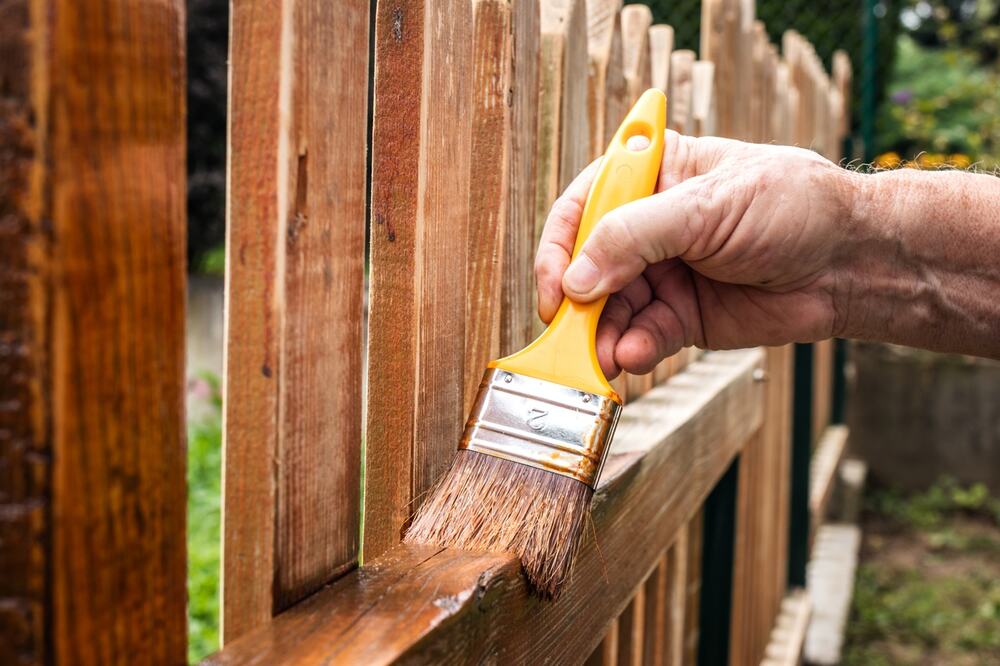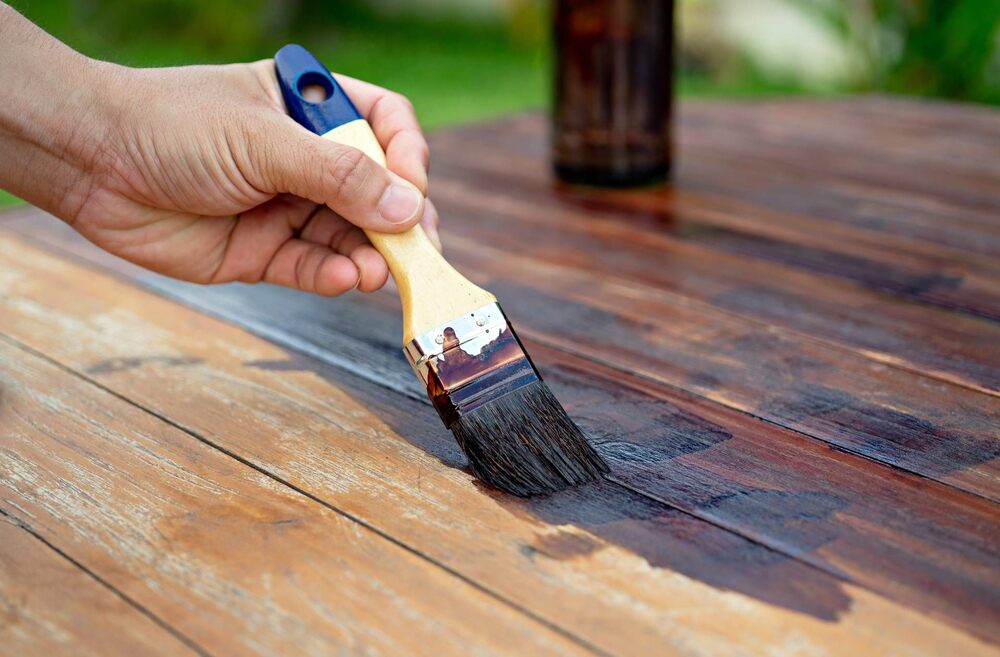Menu

Wood trim enhances the character and curb appeal of any home, but it’s also one of the most vulnerable exterior features. Constant exposure to sunlight, rain, wind, and temperature changes makes proper paint selection critical for both aesthetics and durability.
As the residential painting market continues its upward trend—estimated at $22.6 billion in 2024 with a 0.7% five-year CAGR—homeowners are increasingly seeking expert advice on the best ways to preserve and protect exterior wood elements. Local painting professionals emphasize that not all paints are created equal, especially when it comes to wood trim in high-moisture or high-UV environments.
Key Takeaways✔ Moisture resistance is essential to prevent peeling, rot, and paint failure. ✔ Durability matters—quality paints withstand UV damage and weather extremes. ✔ Mold-resistant formulations keep trim clean and structurally sound. ✔ Trim placement and purpose should guide paint type and sheen. ✔ Climate compatibility ensures the paint performs as expected in local weather. ✔ Proper surface prep extends the lifespan and quality of your paint job. ✔ Common signs of wear—like peeling and fading—signal it’s time to repaint. |

Wood trim is especially vulnerable to moisture, which can lead to peeling, rot, and structural damage if not properly sealed. A high-quality exterior paint for wood serves as a barrier against rain, humidity, and melting snow. Exterior painting specialists recommend looking beyond just color and finish—what matters most is how well the paint resists moisture over time.
Wood trim faces daily wear from the elements, making durability a must. Exterior painting specialists stress the importance of using a long-lasting wood exterior paint that holds up against both harsh sunlight and freeze-thaw cycles. A durable finish reduces the need for frequent repainting and keeps trim looking sharp year after year.
Shady areas of the home—especially north-facing trim—are prone to dampness that encourages mold and mildew. Left untreated, this can lead to unsightly stains, musty odors, and even wood decay. Specialists recommend choosing a mold and mildew-resistant exterior paint to maintain a clean appearance and protect structural integrity.
Not all trim serves the same purpose—some are purely decorative, while others frame windows or cover gaps where moisture can creep in. Local painters often customize their paint selection based on the trim’s location and function. Choosing the right exterior paint for wood depends heavily on how exposed that trim is to the elements.
Exterior paint performance depends heavily on the environment. What works in a dry climate may fail quickly in a region with frequent rain or snow. That’s why local exterior painting specialists recommend exterior house paint for wood siding that’s tested for the area’s specific weather challenges.
Great results begin with the right prep. Skipping or rushing this step often leads to early paint failure—especially on surfaces like wood trim, which are constantly exposed to sun, rain, and humidity. Local painting specialists agree: prepping trim properly makes all the difference in how long exterior paint for wood holds up.
Before anything touches a brush, check the wood for soft spots, splitting, or visible decay. Rotten trim can’t hold primer or paint properly and will continue to deteriorate under even the best durable outdoor wood paint. Replace or repair damaged sections to ensure a sound surface for painting.
Use a paint scraper or heat gun to lift flaking or peeling layers of previous paint. Any loose or bubbling paint will prevent the new long-lasting wood exterior paint from adhering evenly. Follow up with a stiff-bristled brush to remove dust, cobwebs, and dirt from crevices.
Wood trim often harbors mold spores, especially around shaded eaves or siding edges. Scrub affected areas with a solution of water, bleach, and detergent, then rinse thoroughly and allow to dry completely. This step helps ensure that mold and mildew-resistant exterior paint can do its job without interference from hidden fungi.
Sanding evens out rough surfaces and removes any gloss left behind from previous coatings. It also opens the grain of the wood slightly, allowing exterior paint for wood to bond more securely. Use medium to fine-grit sandpaper, working in the direction of the grain for best results.
Metal fasteners can bleed rust through new paint, and open joints can trap water. Seal nail heads with exterior-grade caulk or putty, and fill any gaps or seams between trim boards. This prevents moisture intrusion and helps the weatherproof paint for wood surfaces perform at its full potential.
Unpainted or sanded areas should always be primed before applying the final coat. Use a high-quality oil-based or latex primer depending on the paint type, and allow it to dry fully before continuing. Proper priming boosts adhesion and allows exterior house paint for wood siding to cover evenly without blotching or soaking in unevenly.
Sheen isn’t just about how shiny paint looks—it plays a big role in protection, maintenance, and longevity, which helps explain why interior painting was the most popular home improvement project in the United States in 2020. For exterior trim, the right sheen helps exterior paint for wood resist weather damage while making it easier to clean. Local painting specialists often tailor sheen selection based on location, function, and exposure.
Semi-gloss paint repels water and holds up better in damp spots like window sills, door trim, and baseboards. It pairs well with mold and mildew-resistant exterior paint because its smooth surface doesn’t trap moisture or dirt. This sheen also makes it easier to wipe off pollen, dust, and mildew stains.
Gloss paint offers the hardest, most protective finish, ideal for trim that sees heavy wear. When paired with durable outdoor wood paint, it stands up to UV rays, scrapes, and repeated cleaning. Gloss also brings out architectural details, making features like corbels and columns pop.
Satin sheen strikes a comfortable middle ground—it’s not too shiny but still offers solid protection. It’s a popular choice for trim in shaded areas, where weatherproof paint for wood surfaces must also combat humidity and mildew. Satin is easy to maintain and blends nicely with matte or low-sheen siding.
Flat or matte paint lacks the protective finish needed for wood trim exposed to the elements. It absorbs moisture, making it a poor match for long-lasting wood exterior paint applications. Over time, it’s more likely to fade, chalk, and collect grime that’s tough to clean.
Not all trim requires the same level of shine. For decorative gables or high peaks that aren’t touched often, a satin or eggshell finish may suffice. But for lower trim or door casings, exterior house paint for wood siding with semi-gloss or gloss sheen offers better protection and visual appeal.
In areas with full sun exposure, high-sheen paint can create glare or highlight surface flaws. Choosing a slightly lower sheen—like satin—can help balance appearance without sacrificing the benefits of long-lasting wood exterior paint. This subtle adjustment keeps wood trim looking polished but not overpowering.
Even the best long-lasting wood exterior paint won’t last forever. Over time, sun, moisture, and seasonal changes wear down the surface and weaken the protection. Knowing the signs of paint failure helps prevent wood damage and keeps trim looking sharp and well-maintained.
When paint starts peeling or flaking off the surface, it’s no longer sealing out moisture. This often happens when the wood expands and contracts beneath old paint layers that have lost flexibility. Repainting with durable outdoor wood paint helps lock out water and prevent further breakdown.
Faded or chalky trim is a sign that UV rays have broken down the surface. This is especially common on south-facing trim where sun exposure is strongest. A fresh coat of exterior house paint for wood siding with UV resistance will restore both color and protection.
Dark spots, streaks, or greenish patches indicate mildew is growing through the paint film. Once mold takes hold, it can spread underneath and damage the wood. Applying a mold and mildew-resistant exterior paint is essential to stop regrowth and keep the surface clean.
Hairline cracks along seams or grain patterns suggest the paint has lost elasticity. These openings allow moisture to seep in, leading to hidden damage. Recoating with a flexible, weatherproof paint for wood surfaces will help seal those vulnerable areas.
If wood feels spongy or looks swollen under intact paint, moisture has already gotten inside. This is a red flag that paint has failed even if it appears solid on the outside. Repainting with a premium exterior paint for wood after replacing damaged trim is the best fix.
When regular washing no longer revives the trim’s finish, the surface may be worn too thin to protect. A dull, lifeless appearance means the top layer of the long-lasting wood exterior paint has been eroded by weather and time. Repainting adds both beauty and essential protection.
For exterior wood trim, a high-quality angled sash brush offers precision and control, especially in tight corners and around edges. If the trim is flat and wide, a small roller can help apply exterior paint for wood more evenly. Brushes with synthetic bristles are best for water-based paints, while natural bristles suit oil-based options. Choosing the right applicator helps achieve smooth, professional results with long-lasting wood exterior paint.
It’s best to avoid painting in high humidity or right after rain because moisture in the wood can prevent proper adhesion. Weatherproof paint for wood surfaces still requires dry conditions to bond effectively. Always wait until the trim is completely dry—usually 24 to 48 hours after rain—before applying any product. Painting in the right weather ensures durable outdoor wood paint performs as expected.
In most cases, painters recommend finishing the siding before tackling the trim. This allows for cleaner lines and avoids splattering exterior house paint for wood siding onto the detailed trimwork. Once the main surface is dry, the trim can be taped off and painted with a high-quality mold and mildew-resistant exterior paint. This process ensures a cleaner, longer-lasting finish on both surfaces.
Insects like carpenter ants and termites can burrow into untreated or poorly painted trim. Even well-coated surfaces can be vulnerable if the exterior paint for wood begins to crack or peel. Using durable outdoor wood paint with a tight seal helps deter insects by eliminating access points. It’s also wise to inspect regularly for signs of damage beneath the paint.
Yes, wood trim can be stained instead of painted, but it offers less surface protection than long-lasting wood exterior paint. Stain soaks into the wood and enhances natural grain, but it doesn’t create a hard barrier against moisture and UV rays. For trim exposed to heavy weather, weatherproof paint for wood surfaces provides stronger defense. Stain works best for aesthetic purposes on well-sheltered or decorative trim.
Bring out the best in your home’s exterior with expert trim painting by Trumbull House Painter Pros. Based in Trumbull, CT, this trusted team delivers precision work using long-lasting wood exterior paint, tailored to withstand Connecticut’s changing weather. Whether it’s restoring faded trim, sealing out moisture with weatherproof paint for wood surfaces, or applying a flawless finish, their skilled painters handle every detail with care.
For clean lines, lasting color, and reliable results—schedule a free estimate today with the local pros who treat every home like their own.